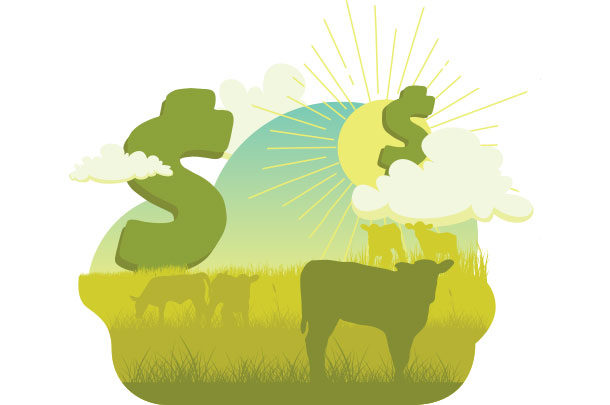Thus, the 2018 cattle production year may or may not have moved as quickly as some stocker-producers would have hoped.
Stocker profits in 2018 were fairly strong through the first nine to 10 months of the year, which most likely means those months flew by for most producers. Alternatively, the last two months of the year were somewhat of a drag as feeder cattle prices softened. Thus, some producers may have felt as if a lump of coal was deposited in their stocking at the end of 2018.
Despite the wins and losses in 2018 and the first two months of 2019, the focus in the stocker cattle business is always on the next group of cattle. The group of cattle consuming most producers’ minds is the spring grass cattle that will be marketed from late July through early September, but some producers are already thinking about summer and fall stocker cattle purchases. Thus, it may be prudent to look at value of gain expectations for each of the three time periods.
March to August
At the time of this writing, the March 2019 feeder cattle contract was trading in the $14-to-$147-per-hundredweight (cwt) price range, while the August contract was near $151 per cwt. Using historical Tennessee basis and seasonal price trend information, 550-pound steers are expected to average between $155 and $160 per cwt in March.
Similarly, the sale price in August for an 850-pound steer (50,000-pound load lot price) is expected to be between $143 and $147 per cwt. Assuming the purchase price is $160 per cwt and the sale price is $143 per cwt, the expected value of gain is $1.12 per pound on 300 pounds of gain.
July to November
Using the same type of analysis as the March-to-August time period, the purchase price of 550-pound steers in July in Tennessee is expected to be between $145 and $150 per cwt, while the expected sale price in November for 850-pound steers is expected to be between $140 and $145 per cwt. Thus, the expected value of gain assuming a purchase price of $150 per cwt and a sale price of $140 per cwt is nearly $1.22 per pound on 300 pounds of gain.
October to 2020
The October purchase of cattle with an intended sale in 2020 begins to push the limits of projections to the breaking point, but it is worth being wrong to give it a try. The expected purchase price range of 550-pound steers in Tennessee in October 2019 is $137 to $142 per cwt, while the expected sale price in late winter and early spring for 850-pound steers is expected to be between $137 and $142 per cwt. Thus, the expected value of gain assuming a purchase price of $142 per cwt and a sell price of $137 per cwt is nearly $1.28 per pound on 300 pounds of gain.
Cost of gain
Value of gain is fairly consistent across production systems, while cost of gain ranges widely. Of the three time periods evaluated, the March- to-August time slot likely has the lowest cost of gain across producers, as most are using spring and summer perennial grasses for most of the weight gain. However, it may take some supplemental feed to achieve an averavge daily gain (ADG) of 2 pounds, as assumed in the value of gain analysis.
A similar story can be told for July to November in relation to perennial forage, but dry periods tend to reduce forage availability, making it difficult to meet an ADG of 2 pounds. The October purchase period will most likely have the highest cost of gain, as most operations have to feed mechanically harvested forage and due to inclement weather conditions.
Another factor to consider that will vary across operations is death loss, morbidity and the use and cost of metaphylaxis. Some stocker operations will use some form of metaphylaxis to reduce the incidence of morbidity and mortality, but the practice is not guaranteed to keep death loss or morbidity at a manageable level or even be fully effective in highly stressed calves. Producers are encouraged to consider all costs when calculating expected margins on a group of cattle.
Conclusion
The first glance at the stocker business appears as if it could be a stocking stuffer in 2019, but no guarantee is made until the check is in the bank. Production, marketing and political issues are all likely to influence stocker producers again this year, as they have in years past, but the extent of impact will be determined as the year progresses. Keep the pencil sharp and the cutting knife sharper. ![]()
ILLUSTRATION: Illustration by Kristen Phillips.

-
Andrew Griffith
- Assistant Professor
- University of Tennessee
- Email Andrew Griffith








